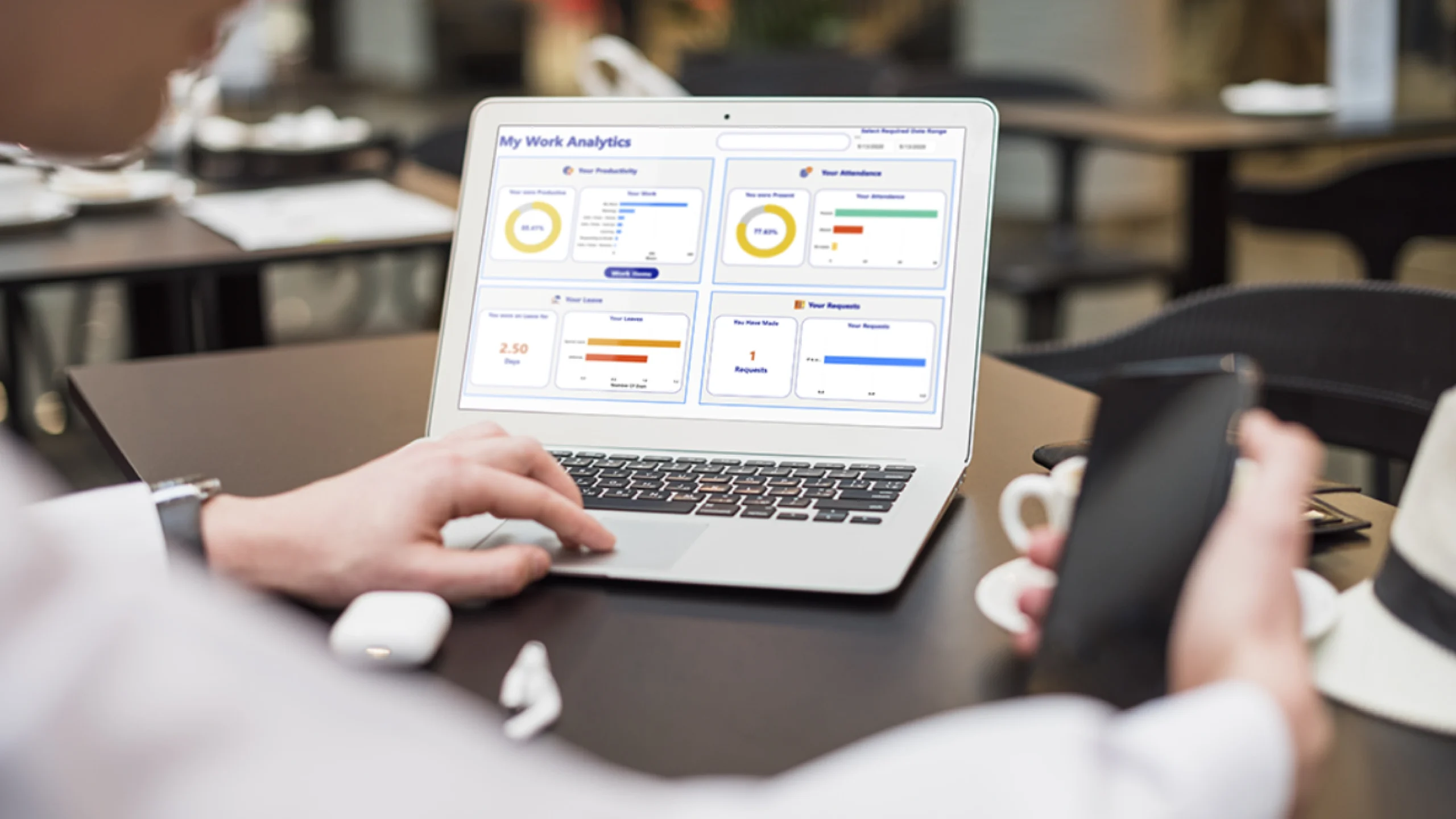In today’s data-driven environment, leveraging data analytics is not just about numbers – it’s about transforming human resources into a hub of strategic decisions that propel organisations forward.
Human Resource (HR) professionals are increasingly turning to human resources data analytics to unearth insights into workforce dynamics and drive enhanced performance at every level.
By incorporating data analytics human resources processes, organisations can optimise numerous HR functions, from recruitment and employee engagement to performance measurement and forecasting.
This shift not only streamlines HR operations but also results in more informed decision-making, allowing companies to respond swiftly to internal and external challenges.
MiHCM’s innovative solutions are at the forefront of this revolution. With tools designed to make data analysis intuitive and accessible, businesses can seamlessly integrate these analytics into their daily operations.
Understanding workforce productivity
Businesses today are leveraging data analytics in HR to unlock the wealth of information contained within their workforce.
By examining HR metrics and analysing data trends, companies can gain invaluable insights into workforce demographics and productivity. This insight empowers HR professionals to make data-driven decisions that directly enhance the bottom line.
For instance, identifying productivity peaks and troughs allows for more strategic allocation of resources, ensuring that teams operate at their optimal capacity.
Moreover, the analysis of human resources data analytics enables organisations to foresee potential issues before they arise, enhancing overall workforce productivity.
Effective recruitment and turnover management

One of the standout benefits of HR data analysis is its impact on recruitment processes.
By utilising recruitment analytics, such as time-to-hire and applicant-to-hire ratios, companies can streamline their hiring processes, leading to more efficient recruitment. This not only reduces costs but also ensures that the best candidates are onboarded swiftly.
Addressing turnover is another area where HR data analytics shines. By analysing turnover trends, organisations can identify underlying causes of employee churn. Such insights enable proactive measures to retain valuable talent.
HR analytics data offers predictive capabilities, allowing businesses to mitigate risks associated with high turnover rates.
Integrating data tools into HR
Integrating HR data analytics into your organisation’s HR processes involves several strategic steps that are essential for achieving seamless workforce management.
The primary step is to ensure that your HR team understands the value of data analytics in human resources. This includes comprehending how it affects recruitment, performance analysis, and decision-making processes.
Steps for successful integration
- Identify your HR objectives and align them with analytics goals.
- Ensure data accuracy and assign roles for data management.
- Incorporate data analytics software that offers real-time and predictive analytics.
- Provide training for any software to enhance understanding among HR professionals.
MiHCM products, such as MiHCM Enterprise and MiHCM Lite, are designed to support data-driven HR decisions by offering robust analytics tools that improve workforce productivity.
Investing in these platforms allows HR teams to better understand workforce dynamics and make informed decisions to enhance workplace productivity.
Best practices for data privacy

Ensuring data accuracy and privacy is critical in implementing HR data analysis. It involves robust data protection measures and adherence to compliance standards to secure sensitive employee information.
Organisations must adopt best practices such as using secure data storage solutions, regular audits, and training HR teams on data privacy protocols.
Overcoming common analytics challenges
While HR data analytics presents numerous opportunities, it also poses significant challenges in terms of data diversity, integration, and security. To maximise the effectiveness of data analytics in HR, organisations must address these hurdles strategically.
Data diversity often involves managing varied and large data sets from different sources, which can be cumbersome without a unified analytics platform.
Integrating these diverse data streams into cohesive insights requires robust tools, and this is where MiHCM’s comprehensive analytics solutions come into play. By providing seamless integration and intuitive interface, MiHCM helps organisations efficiently manage and interpret HR analytics data, enhancing decision-making processes.
Data security remains another priority within data analytics human resources frameworks. Protecting sensitive employee information requires strict security protocols and adherence to privacy regulations.
MiHCM’s platform offers advanced security measures to safeguard data integrity and privacy, allowing HR teams to focus on strategic workforce management without compliance concerns.
Training and development for HR professionals are critical in overcoming these challenges. Organisations should invest in upskilling their teams to adopt new technologies effectively, ensuring they can capitalise on the full potential of human resources data analytics.
Through continuous learning and adopting best practices, HR departments can transform data analytics challenges into growth opportunities. Engaging with MiHCM’s analytics tools offered a user-friendly platform, minimising the learning curve for HR professionals.
The next frontier for HR analytics

The future of HR data analytics is set to be transformative, propelled by advancements in artificial intelligence and machine learning.
These technologies are paving the way for more sophisticated predictive analytics, enabling HR professionals to anticipate workforce trends and needs with unparalleled accuracy. This evolution aims to transcend mere data collection to provide strategic insights that drive competitive advantage.
Key trends include the integration of AI to automate routine HR tasks, allowing teams to focus on strategic decision-making. Furthermore, machine learning can help refine workforce strategies by continuously analysing vast datasets to identify patterns and insights otherwise overlooked.
As the field matures, it’s expected that more businesses will adopt these technologies to enhance their HR functions.
MiHCM is at the forefront of this innovation, providing comprehensive solutions that align with the emerging trends. MiHCM’s vision integrates the power of AI within its analytics platforms, enabling businesses to improve decision-making processes and manage their workforce effectively.



